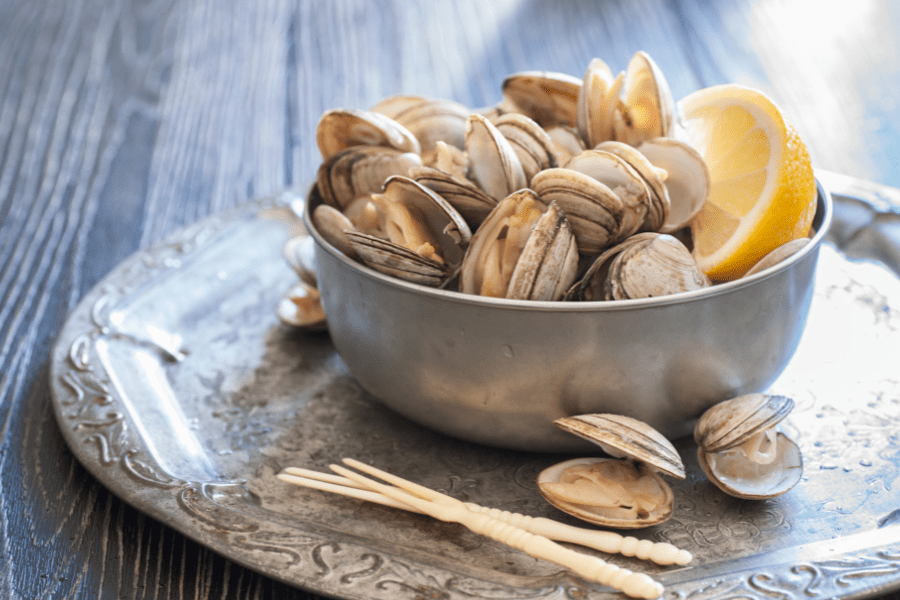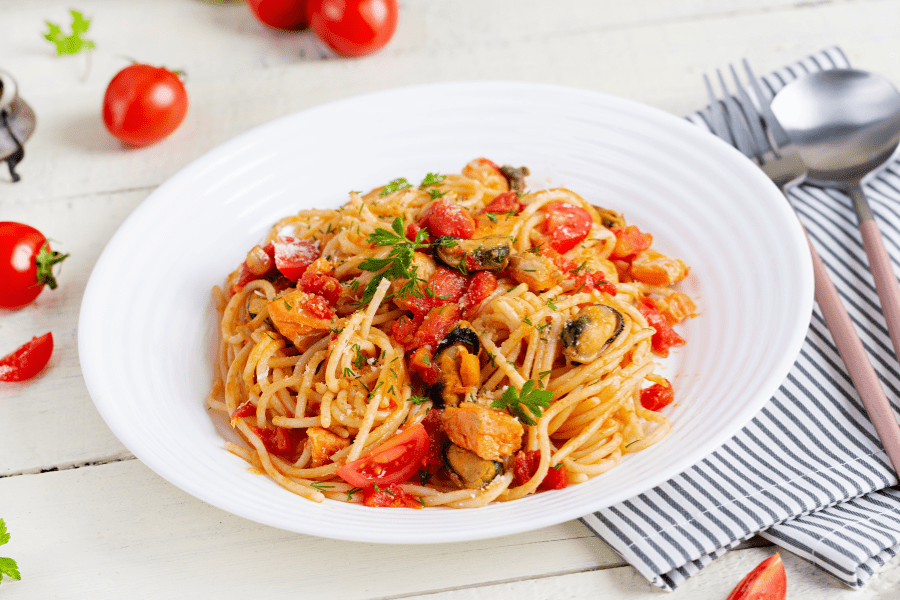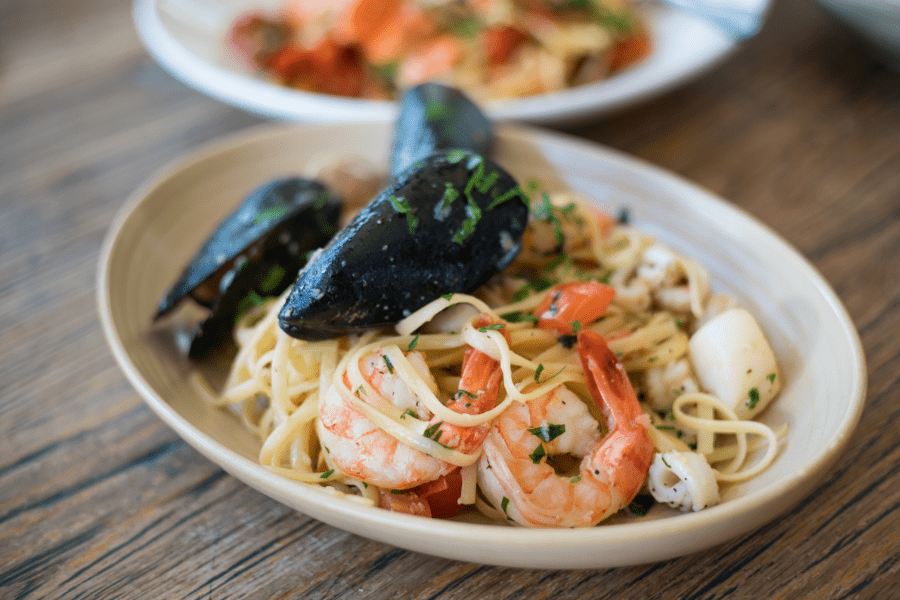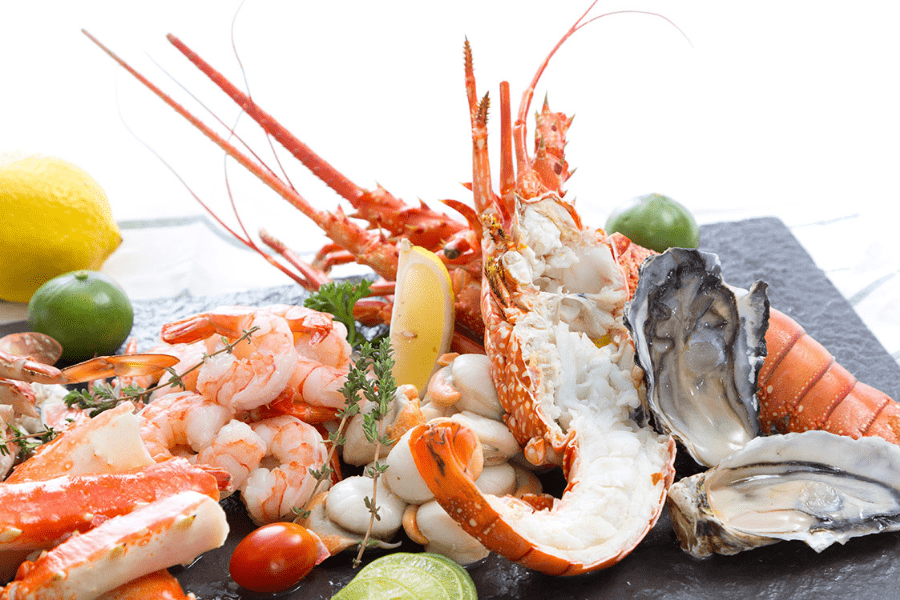We use cookies to give you a better experience on our website. Learn more about how we use cookies and how you can select your preferences.
Seafood labelling laws are changing for hospitality businesses
There are new country of origin labeling rules for hospitality businesses.
From 1 July 2026, you'll need to tell customers if the seafood you serve is Australian, imported or both.
Watch a video about the new rules
[Music starts. A cartoon picture of a cafe appears. The word ‘Bistro’ and a large fish are mounted on the roof of the building. Lights are strung across the front of the building and there is a fishtank containing a lobster, prawn and 2 other fish. There is a menu on the front wall. A chef wearing blue trousers and a white chef’s coat and hat enters from the left. They are smiling and holding a bowl of lobsters and prawns.]
Narrator: Food labelling rules for seafood in the hospitality industry are changing.
[We zoom in on the menu, which has images, names and prices of dishes.]
Narrator: Hospitality businesses will need to label all seafood dishes using the AIM model. The reason for using the AIM model is to show the origin of seafood.
[We shift to a close-up of the fish tank showing the fish, then zoom out to show a cartoon image of the world, with the fish moving to different locations around Australia and Asia.]
Narrator: Dishes containing seafood will need to be labelled with an A for Australian, I for imported or M for mixed origin.
[The menu reappears. A magnifying glass zooms in on individual menu items: Grilled Salmon (A), Seafood Paella (I) and Seafood Platter (M). Boxes pop out to explain what each letter stands for.]
Narrator: This labelling should be clearly visible on menus or display boards.
[An A-frame menu board appears showing a menu of dishes with the AIM labelling. It zooms out to show a man and a woman beside the board, which is outside a cafe. They both look curious and engaged. The woman is pointing to the board.]
Narrator: The changes will help customers make informed choices about the dishes they eat.
[The scene changes to 2 smiling people sitting at a table inside a restaurant and drinking red wine. One of them is holding a menu. A smiling waiter with a pen and pad is taking their order. On the wall behind them is a menu board showing dishes and prices.]
Narrator: For more information about the new information standard, the transition period and to access guidance materials, visit business.gov.au/seafoodlabels.
[A magnifying glass zooms in on a poster with a lobster and some text on it. It moves over boxes showing ‘A = Australia’, ‘I = Imported’ and ‘M = Mixed origin’. It then moves over a QR code and zooms in further to highlight the words ‘Find out more at business.gov.au/seafoodlabels’.]
[The video ends with the Australian Government coat of arms. Music stops.]
What you need to do
-
Labelling seafood in your hospitality business
Find out what dishes the rules apply to and how to label them.
Latest updates and information
-

Download the new posters to show your support.
-

Let the country of origin labelling rules for seafood tell them.
-

The new information standard for seafood country of origin labelling (CoOL) comes into force from 1 July 2026. We have answered some of the most frequently asked questions.
-
.png?h=600&iar=0&w=900&hash=224758D2C3E4171B5C77C90DF3B0AA42)
If you sell dishes containing seafood from a mobile or fixed food truck then you must comply with the new country of origin labelling rules for seafood.
-

If you sell dishes containing seafood to the public, this information is for you.
-

Country of origin labelling for seafood in hospitality settings will be mandatory from 1 July 2026.
